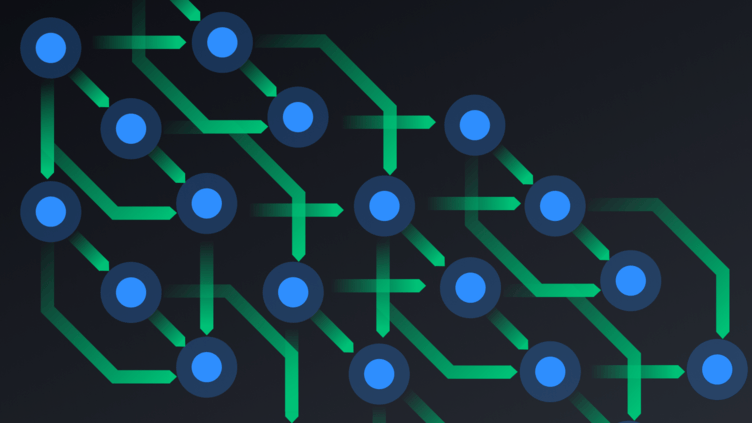In this article, we delve into the disruptive potential of Directed Acyclic Graphs (DAG) in challenging traditional blockchain technology. Investors can purchase this electronic money using traditional currency through online brokerages such as the official trading app.
Advantages of DAG over Traditional Blockchain
Directed Acyclic Graphs (DAG) offer several key advantages over traditional blockchain systems, revolutionizing the way transactions are processed and verified. One significant advantage is scalability. Unlike traditional blockchains that suffer from congestion and slow transaction speeds as the network grows, DAG-based systems can handle a higher volume of transactions with ease. By using a DAG structure, where transactions can be processed concurrently, DAG networks achieve remarkable scalability, making them ideal for applications that require fast and efficient transaction processing.
Another advantage of DAG is its ability to achieve faster transaction speeds. Traditional blockchains often face delays in confirming transactions due to the time-consuming process of reaching consensus among nodes. In contrast, DAG enables transactions to be confirmed in a more streamlined manner, as each transaction can be verified independently without relying on a centralized consensus mechanism.
Reduced transaction fees are also a notable advantage offered by DAG. In traditional blockchain systems, transaction fees can be high, especially during peak usage periods when the network is congested. DAG’s inherent scalability and faster transaction speeds result in reduced transaction fees, making it more cost-effective for users. Lower transaction fees not only benefit individual users but also pave the way for broader adoption of blockchain technology across various industries, particularly those that rely heavily on microtransactions or high-frequency transactions.
Flexibility and adaptability are additional advantages that set DAG apart from traditional blockchain systems. DAG-based networks can accommodate a wide range of use cases and tailor their structure to fit specific requirements. The flexible nature of DAG allows for customization, enabling developers to design networks that cater to specific industry needs. This adaptability makes DAG a promising solution for industries seeking blockchain technology that can seamlessly integrate with existing infrastructure and support diverse applications, from supply chain management to Internet of Things (IoT) implementations.
DAG offers significant advantages over traditional blockchain systems. Its scalability, faster transaction speeds, reduced transaction fees, and flexibility make it a disruptive force in the blockchain industry. By addressing the limitations of traditional blockchain, DAG opens up new possibilities for industries and applications, making it an exciting technology to watch as it continues to shape the future of decentralized systems.
Challenges and Limitations of DAG
While Directed Acyclic Graphs (DAG) offer numerous advantages, it is important to acknowledge the challenges and limitations associated with this innovative technology. One potential challenge is the vulnerability to security threats. DAG-based systems are susceptible to certain types of attacks, such as double-spending and 51% attacks. Ensuring robust security measures and consensus mechanisms is crucial to mitigate these risks and maintain the integrity of the network.
Another consideration is the potential for centralization in DAG networks. As the network grows, there is a possibility of a few nodes gaining significant influence and control, which could undermine the decentralized nature of the system. Maintaining a distributed network and implementing mechanisms to prevent centralization are essential to preserve the core principles of blockchain technology.
Consensus mechanisms play a vital role in the stability and security of DAG networks. However, designing effective consensus algorithms for DAG can be complex. Achieving consensus in a network where transactions can occur simultaneously requires careful consideration and innovative approaches. Developing consensus mechanisms that strike a balance between scalability, security, and decentralization is an ongoing challenge in the field of DAG research and implementation.
Furthermore, interoperability with existing blockchain systems is an area that requires attention. As DAG gains traction, compatibility and seamless integration with traditional blockchains can enhance its potential impact. Overcoming the interoperability challenge will enable cross-chain transactions and collaboration, opening up new possibilities for decentralized applications and ecosystems.
It is crucial to address these challenges and limitations to ensure the long-term viability and success of DAG technology. Ongoing research, collaboration among developers, and community engagement will play a pivotal role in overcoming these hurdles and unlocking the full potential of DAG in disrupting the blockchain landscape.
While DAG offers numerous advantages, challenges and limitations exist that need to be addressed. Security vulnerabilities, potential centralization risks, consensus mechanisms, and interoperability with traditional blockchains require careful consideration and continuous improvement. By addressing these challenges, DAG can continue to evolve as a robust and innovative solution, pushing the boundaries of blockchain technology.
Conclusion
The rise of Directed Acyclic Graphs (DAG) introduces a new era in blockchain technology, addressing the scalability, transaction speed, and fee challenges of traditional systems. With real-world use cases and a promising future, DAG has the potential to reshape industries, making it an exciting innovation to watch and explore further.

